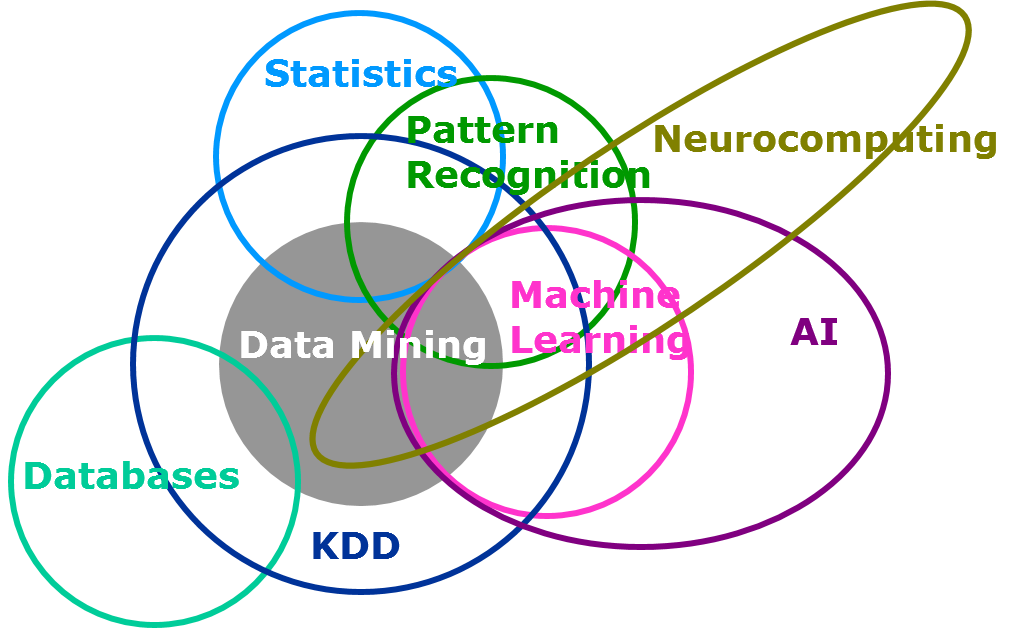
AI in the military can have many benefits, including the ability to save lives and improve combat effectiveness. Drones are capable of identifying battlefield targets and providing assistance to warfighters. Drones can be used to guide smart weapons systems and reduce human warfighters. While AI can have a tremendous impact on combat effectiveness, it is important to carefully evaluate this technology. In this article, we'll look at the ethical concerns surrounding AI in the military and how Congressional decision making will shape the future of the field.
Future military AI development is influenced by Congress' decisions
The future development and evolution of artificial intelligence technology will require Congress to make key decisions. AI will become more capable of detecting and responding quickly to new situations, making it easier for military operations. But, the question remains: will AI be a benefit to the United States army? It is worth noting that the United States Army remains one of the world's largest militaries. It will have to be able support allied and U.S-NATO missions, and opportunistically to learn.
DoD ethical AI guidelines should be translated into common technical specifications, evaluation metrics, enhanced coordination with industry, and non-traditional vendors. The military must be able to trust these systems, which is difficult if the AI is not developed in a safe environment. The need for trustworthy AI should be stressed by Congress decision makers. AI implementation is highly dependent on the trust between the human operator and the machine. This will require strong coordination among the Department of Defense and industry as well as other stakeholders.

Potential applications of AI to the military
Military AI can aid in decision-making by providing information to human operators as they are performing these tasks. It can even replace human operators in whole decision-making processes. It will ultimately improve human control of military systems. AI can result in a complex system which is difficult to comprehend. As a result, it may not always perform as intended. AI can also be opaque and not always trusted.
Access to data is required for military AI systems as well as other AI applications. Many AI systems are trained by labeled data created from human experts. Although sharing data between companies can be difficult, it is vital for military AI systems that they have access to large datasets. Thermal-imaging imagery is one example. The expert system could use the images to describe the weapon systems. This AI could have many military applications.
Requires human involvement
It is an ethical issue to decide whether autonomous weapons should be allowed in the military. The question of whether such systems are useful or harmful largely depends on the nature of the adversary and contextual factors. Although military commanders have the responsibility, humans must be involved at all stages of AI systems' development, from design to regulation. Although AI-based weapons are still in rapid development, military leaders need to ensure they are prepared for the ever-growing threat. Military leaders must address the concerns of technologists and private sector, in addition to being prepared for future warfare.
AI-based systems, while they can improve the capabilities the U.S. military's ability to do so, they also present new challenges. Although computers are sometimes considered smarter than human beings, they are unable to think critically, make informed decisions, or adapt in real time. These limitations make them vulnerable to errors, especially when they are in unfamiliar situations. The Pentagon should develop AI systems that can play to both the strengths of man and machine. AI-based systems should have higher human confidence.

Military ethics
Many countries have stated their commitment to not deploy or develop fully autonomous weapon systems. AI must also be evaluated on an ethical basis. Ultimately, the decision to use AI should be based on the desires of the population. There are two main ways to assess the ethical implications for using AI in military purposes: contract theory or utilitarian. Utilitarians weigh the possible well-being of their users to determine the best option. They also weigh the risk that AI will favor one side over another.
In a hostile or non-belligerent setting, the general principles of justice may differ. The terms of justice in hostilities are defined by international humanitarian law and just warfare theory. These guidelines are intended to clarify and promote fairness and just conduct in the area of AI defence. These guidelines address ethical concerns associated with AI's indecipherability. These ethical issues are further discussed in the next section.
FAQ
What countries are the leaders in AI today?
China is the leader in global Artificial Intelligence with more than $2Billion in revenue in 2018. China's AI market is led by Baidu. Tencent Holdings Ltd. Tencent Holdings Ltd. Huawei Technologies Co. Ltd. Xiaomi Technology Inc.
China's government invests heavily in AI development. The Chinese government has established several research centres to enhance AI capabilities. These centers include the National Laboratory of Pattern Recognition and the State Key Lab of Virtual Reality Technology and Systems.
China also hosts some of the most important companies worldwide, including Tencent, Baidu and Tencent. These companies are all actively developing their own AI solutions.
India is another country that has made significant progress in developing AI and related technology. The government of India is currently focusing on the development of an AI ecosystem.
What are some examples AI apps?
AI is being used in many different areas, such as finance, healthcare management, manufacturing and transportation. Here are a few examples.
-
Finance - AI already helps banks detect fraud. AI can identify suspicious activity by scanning millions of transactions daily.
-
Healthcare – AI is used for diagnosing diseases, spotting cancerous cells, as well as recommending treatments.
-
Manufacturing - AI in factories is used to increase efficiency, and decrease costs.
-
Transportation - Self-driving cars have been tested successfully in California. They are being tested across the globe.
-
Utility companies use AI to monitor energy usage patterns.
-
Education – AI is being used to educate. Students can communicate with robots through their smartphones, for instance.
-
Government – Artificial intelligence is being used within the government to track terrorists and criminals.
-
Law Enforcement – AI is being used in police investigations. The databases can contain thousands of hours' worth of CCTV footage that detectives can search.
-
Defense - AI systems can be used offensively as well defensively. An AI system can be used to hack into enemy systems. For defense purposes, AI systems can be used for cyber security to protect military bases.
Why is AI important?
It is expected that there will be billions of connected devices within the next 30 years. These devices will cover everything from fridges to cars. The combination of billions of devices and the internet makes up the Internet of Things (IoT). IoT devices are expected to communicate with each others and share data. They will also be capable of making their own decisions. For example, a fridge might decide whether to order more milk based on past consumption patterns.
It is expected that there will be 50 Billion IoT devices by 2025. This is an enormous opportunity for businesses. However, it also raises many concerns about security and privacy.
Is there any other technology that can compete with AI?
Yes, but not yet. Many technologies have been created to solve particular problems. But none of them are as fast or accurate as AI.
How does AI work?
Basic computing principles are necessary to understand how AI works.
Computers keep information in memory. Computers interpret coded programs to process information. The code tells the computer what to do next.
An algorithm is a set of instructions that tell the computer how to perform a specific task. These algorithms are often written in code.
An algorithm can be considered a recipe. An algorithm can contain steps and ingredients. Each step might be an instruction. An example: One instruction could say "add water" and another "heat it until boiling."
Who was the first to create AI?
Alan Turing
Turing was created in 1912. His father was clergyman and his mom was a nurse. He was an excellent student at maths, but he fell apart after being rejected from Cambridge University. He began playing chess, and won many tournaments. After World War II, he was employed at Bletchley Park in Britain, where he cracked German codes.
He died in 1954.
John McCarthy
McCarthy was born 1928. Before joining MIT, he studied maths at Princeton University. There he developed the LISP programming language. By 1957 he had created the foundations of modern AI.
He passed away in 2011.
What does the future hold for AI?
Artificial intelligence (AI), the future of artificial Intelligence (AI), is not about building smarter machines than we are, but rather creating systems that learn from our experiences and improve over time.
In other words, we need to build machines that learn how to learn.
This would enable us to create algorithms that teach each other through example.
We should also consider the possibility of designing our own learning algorithms.
It is important to ensure that they are flexible enough to adapt to all situations.
Statistics
- The company's AI team trained an image recognition model to 85 percent accuracy using billions of public Instagram photos tagged with hashtags. (builtin.com)
- By using BrainBox AI, commercial buildings can reduce total energy costs by 25% and improves occupant comfort by 60%. (analyticsinsight.net)
- According to the company's website, more than 800 financial firms use AlphaSense, including some Fortune 500 corporations. (builtin.com)
- In 2019, AI adoption among large companies increased by 47% compared to 2018, according to the latest Artificial IntelligenceIndex report. (marsner.com)
- In the first half of 2017, the company discovered and banned 300,000 terrorist-linked accounts, 95 percent of which were found by non-human, artificially intelligent machines. (builtin.com)
External Links
How To
How to Set Up Amazon Echo Dot
Amazon Echo Dot is a small device that connects to your Wi-Fi network and allows you to use voice commands to control smart home devices like lights, thermostats, fans, etc. To begin listening to music, news or sports scores, say "Alexa". You can ask questions and send messages, make calls and send messages. Bluetooth headphones or Bluetooth speakers can be used in conjunction with the device. This allows you to enjoy music from anywhere in the house.
You can connect your Alexa-enabled device to your TV via an HDMI cable or wireless adapter. You can use the Echo Dot with multiple TVs by purchasing one wireless adapter. You can also pair multiple Echos at one time so that they work together, even if they aren’t physically nearby.
Follow these steps to set up your Echo Dot
-
Turn off your Echo Dot.
-
Connect your Echo Dot via its Ethernet port to your Wi Fi router. Turn off the power switch.
-
Open Alexa for Android or iOS on your phone.
-
Select Echo Dot from the list of devices.
-
Select Add a New Device.
-
Choose Echo Dot among the options in the drop-down list.
-
Follow the instructions.
-
When asked, enter the name that you would like to be associated with your Echo Dot.
-
Tap Allow access.
-
Wait until the Echo Dot successfully connects to your Wi Fi.
-
This process should be repeated for all Echo Dots that you intend to use.
-
You can enjoy hands-free convenience